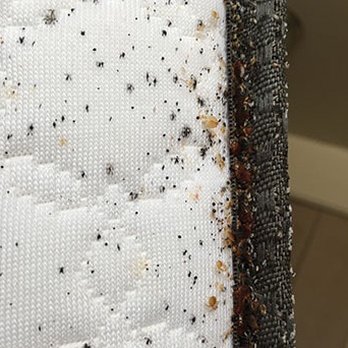Proven Techniques for Bed Insect Elimination by Specialist Pest Control Specialists
In the world of insect control, combating bed bugs offers an unique obstacle that frequently needs the knowledge of professional pest control specialists. By understanding the intricacies of bed bug actions and employing specialized techniques, professionals can supply targeted services that provide durable alleviation.
Assessment and Discovery
Reliable bed pest extermination starts with a thorough evaluation and thorough discovery process to identify infested locations. Expert parasite control experts use a systematic technique to identify the existence of bed insects in a residential property. During the evaluation, trained professionals thoroughly check out typical hiding areas such as cushion joints, furnishings holes, electrical outlets, and baseboards. The objective is to find real-time pests, eggs, dropped skins, fecal areas, and various other indicators of bed bug activity.
Making use of tools like flashlights, amplifying glasses, and specifically trained bed pest discovery pets, professionals can properly examine the degree of the invasion. Discovery devices like interceptors placed under furniture legs can also assist in trapping bed bugs for recognition. This extensive evaluation allows pest control men to create a targeted therapy plan tailored to the specific demands of the infested area.
Warmth Therapy
Bed bug extermination through heat treatment involves raising the temperature level of plagued locations to levels that are dangerous to these parasites. This method is very efficient in getting rid of bed bugs at all stages of their life cycle, consisting of eggs, fairies, and adults. Specialist bug control specialists utilize specific equipment to warm the infested area to temperatures between 120 ° F and 140 ° F, as this variety is recognized to kill bed pests within minutes.

It is essential for the success of warm therapy that all infested items are revealed to the lethal temperatures for a continual period. Consequently, professional insect control service technicians will certainly usually encourage customers on needed primary actions, such as decluttering, vacuuming, and laundering bed linens at high temperature levels to optimize the therapy's performance. On the whole, warm treatment stands as a tested technique for efficient and extensive bed insect extermination.
Chemical Therapies
Having addressed the efficiency of heat treatment in getting rid of bed bugs comprehensively, the conversation currently changes in the direction of the usage of chemical treatments in bug control methods. Chemical treatments are a common technique used by bug control experts to eradicate bed bug invasions (Bed Bug Exterminator Washington DC Incredible Exterminator). These treatments entail the application of pesticides particularly developed to target and eliminate bed pests whatsoever phases of their life cycle
Professional parasite control firms use a selection of chemical treatments to battle bed pests properly. These therapies may consist of residual insecticides, which continue to be active for an extended duration, killing bed insects that enter call with treated surface areas. Insect growth regulatory authorities (IGRs) are also made use of to interrupt the bed pests' life cycle, stopping their reproduction and bring about population decrease in time.
It is essential to keep in mind that chemical treatments must only be provided by trained specialists to guarantee their efficacy and decrease any possible dangers to human wellness. Pest control experts will certainly perform a thorough assessment to determine the degree of the problem prior to carrying out the most ideal chemical treatment plan to address the details bed pest issue effectively.
Vacuuming and Heavy Steam Cleaning
Normal upkeep of tidiness with vacuuming and steam cleaning plays a vital function in the prevention and control of bed insect invasions. Vacuuming visit the website is a reliable approach to literally remove bed bugs, eggs, and larvae from different surfaces such as mattresses, carpetings, baseboards, and furnishings.
Steam can penetrate into materials and holes where bed insects conceal, making certain a more complete obliteration procedure. Regularly including vacuuming and steam cleaning right into your cleaning routine can help stop and control bed insect problems, specifically when combined with various other specialist parasite control approaches.
Follow-Up Monitoring
Efficient monitoring of bed bug infestations involves continuous caution with detailed follow-up monitoring procedures to make sure the obliteration procedure achieves success and prevent reinfestation. Adhering to the preliminary treatment for bed insects, it is critical to conduct normal follow-up assessments to check any type of indicators of remaining bed pests or brand-new problems. Expert pest control experts advise scheduling follow-up brows through at certain periods to examine the efficiency of the treatment and deal with any type of emerging concerns quickly.
During follow-up tracking, bug control experts utilize a mix of aesthetic assessments, bed insect traps, and keeping track of gadgets to track the presence of bed bugs. These methods aid in determining any type of residual bed bug activity and determining the demand for further treatment. It is essential to continue keeping an eye on for a number of weeks after the initial treatment to make certain complete obliteration of bed pests and prevent their renewal.

Final Thought
To conclude, professional pest control specialists make use of proven techniques such as evaluation, warm therapy, chemical treatments, vacuuming, and heavy steam cleansing to successfully eliminate bed insects. These methods are crucial in eradicating invasions and stopping future outbreaks. It is vital to attend to bed insect infestations without delay and thoroughly to guarantee the security carpenter ant control and well-being of individuals in impacted areas. Surveillance and follow-up inspections are essential to confirm the success of the extermination process.